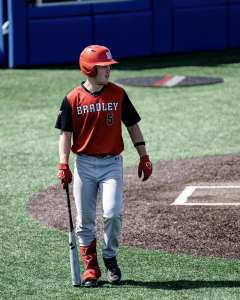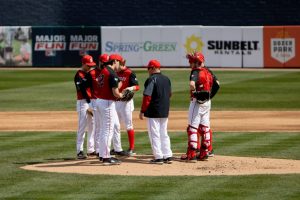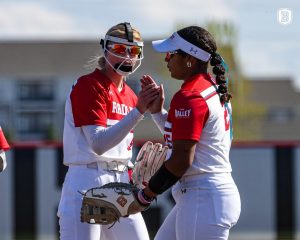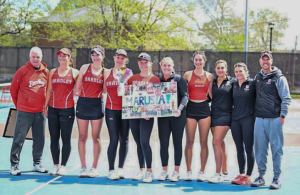This past offseason, ESPN published a book filled with college basketball history called the “ESPN College Basketball Encyclopedia: The Complete History of the Men’s Game.”
The book attempts to cover the game of men’s basketball since its inception in 1937.
But the main draw of the book is the overall ranking it contains for each Div. I program.
Using a computer and a lot of math, the book compiles a list to determine the best programs in college basketball.
Kentucky surprised many by getting the top spots, even though UCLA has the most National Championships with 11.
The Big Ten dominated the rest of the top-10 with Indiana at the No. 5 spot and Illinois one spot behind them. Purdue, Ohio State and Iowa took the final three spots of the top-10.
But the real story, for Peorians, in this book is Bradley’s ranking.
Based on the successes of Bradley teams in ’40s, ’50s and ’60s, the Braves earned 39th overall spot in the encyclopedia.
The apex of the Braves’ ranking is the eighth spot they garnered in the 1960s after seasons of 27-2 in 1959-60, 23-6 in 1963-64 and 20-6 in 1965-66.
In that decade, they had four seasons of 20-plus wins and eight straight years from the 1959-60 season to the 1967-68 season without double-digit losses.
In the ’50s, starting with the 1956-57 season, the Braves spent a considerable amount of time in the top 10 in the AP Top 25 polls, including all of the 1958-59 season.
That season was spent mostly in the No. 2 slot behind conference leader Cincinnati.
Ever since the ’60s, the Braves have had flashes of brilliance including Hersey Hawkins’ career in a Braves uniform and the 2006 run to the Sweet Sixteen as a 13-seeded team in the NCAA Tournament.
Although they weren’t in the top-40 programs after the ’60s, the rankings tell a story of the history of basketball on the Hilltop.
The rankings shed light on why basketball is a big deal to the people of Peoria.




